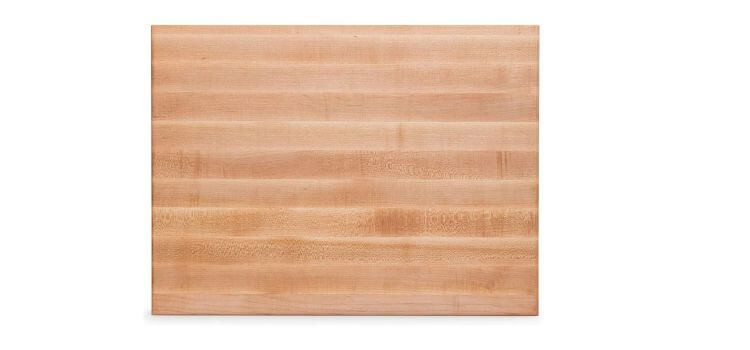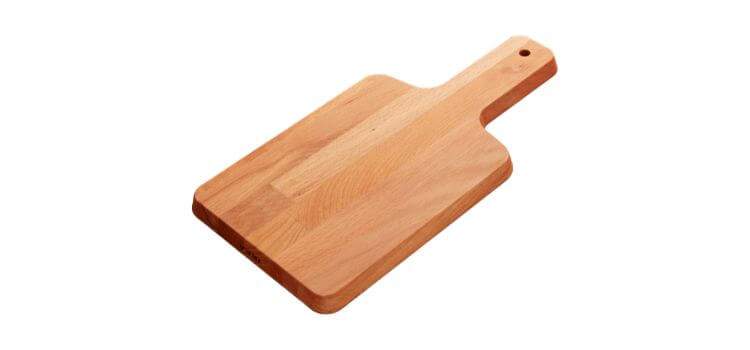As an Amazon Associate, I earn from qualifying purchases

In any kitchen, cutting boards are indispensable tools. They serve as the foundation for preparing meals and play a crucial role in maintaining cleanliness and protecting countertops. The material of a cutting board can significantly affect its performance, longevity, and ease of maintenance.
Among the various options available, beech wood stands out as a popular choice, often praised for its reliable and consistent performance. This article delves into whether beech wood is a suitable material for cutting boards by examining its properties, benefits, drawbacks, and comparisons with other woods.
Properties of Beech Wood
Beech wood is characterized by its light color, which can range from pale cream to a pinkish hue. This neutral tone allows it to fit seamlessly into various kitchen aesthetics. The wood’s fine, straight grain adds to its visual appeal, providing a clean and uniform appearance that is both elegant and understated.
In terms of physical properties, beech wood is known for its hardness and density. It ranks high on the Janka hardness scale, indicating its ability to withstand significant wear and tear. This density contributes to its resistance to splitting, making it a reliable choice for a cutting board surface that will endure frequent use.
The uniform texture of beech wood further enhances its suitability for cutting boards. Its smooth surface lends itself well to food preparation, providing a consistent experience whether you’re slicing vegetables or carving meat. Additionally, the wood’s resistance to splitting means it can better handle the impact and pressure of chopping without developing cracks.
Benefits of Beech Wood for Cutting Boards
- Durability: Beech wood is highly durable, allowing it to endure daily kitchen tasks like chopping and slicing without significant wear. This makes it a long-lasting investment for home chefs.
- Knife-friendliness: The hardness of beech wood resists damage while being gentle on knives, helping to maintain their sharpness. This balance prevents quick dulling of knives while ensuring the board can handle frequent use.
- Cost-effectiveness: Beech wood is generally more affordable than other hardwoods such as walnut or cherry. This makes it an appealing choice for those who want quality cutting boards without excessive spending, offering great value for money.
Drawbacks of Beech Wood for Cutting Boards
- Susceptibility to Moisture: Beech wood is prone to absorbing water if not properly maintained, which can lead to warping or cracking over time. Regular care is essential to prevent damage and ensure the longevity of the wood.
- Maintenance Requirements: Beech wood cutting boards need frequent oiling to maintain their moisture resistance and prevent drying out. For those seeking low-maintenance kitchen solutions, this can be seen as a drawback, as it adds an extra step to the upkeep process.
- Weight Considerations: Being denser and heavier than some other cutting board materials, beech wood may be challenging for those who prefer lightweight options that are easier to maneuver and store in the kitchen.
Comparisons with Other Types of Wood

When evaluating beech wood as a material for cutting boards, it’s helpful to compare it with other common options to understand its advantages and disadvantages more clearly.
- Maple: Maple is a popular choice for cutting boards due to its hardness and affordability. It shares similar durability with beech wood but typically requires less maintenance, making it a practical choice for many. However, beech wood’s unique grain pattern and slightly more muted color may be more appealing to some.
- Bamboo: Bamboo is celebrated for its sustainability and eco-friendliness. It is harder than beech wood, which can be rough on knives, and often more affordable. However, bamboo lacks the warmth and traditional aesthetic that beech wood offers, which can be an important factor for those prioritizing kitchen style.
- Walnut: Walnut is known for its rich color and luxurious appearance. It is softer than beech wood, providing a more knife-friendly surface, but it requires similar maintenance. While walnut can be more visually striking, beech wood offers a cost-effective alternative with comparable performance.
Care and Maintenance Tips
Proper care and maintenance are essential to maximize the lifespan of a beech wood cutting board. Here are some tips:
- Cleaning: After each use, clean the board with mild soap and warm water. Avoid immersing it in water or using a dishwasher, as this can cause damage. Dry the board thoroughly with a towel immediately after washing.
- Oiling: Regular oiling is crucial for maintaining the board’s integrity. Use a food-grade mineral oil, applying it evenly over the surface. Allow the oil to soak in overnight, and then wipe away any excess. This should be done every few weeks or whenever the board appears dry.
- Storage: Store your cutting board in a dry area away from direct sunlight and heat sources. If possible, store it upright to ensure even air circulation, which helps prevent warping.
Conclusion
In conclusion, beech wood is a viable and appealing choice for cutting boards, offering a blend of durability, knife-friendliness, and cost-effectiveness. While it requires regular maintenance to prevent moisture-related damage, its long-lasting nature and aesthetic appeal make it a worthwhile option for those who appreciate quality kitchen tools.
Ultimately, the decision to choose a beech wood cutting board should be guided by personal preferences, kitchen needs, and a willingness to invest in proper care. Whether for everyday cooking or special occasions, a beech wood cutting board can enhance both the functionality and style of your culinary space.
FAQ
Is beech wood hygienic?
Yes, beech wood is hygienic for cutting boards when properly maintained. Its fine grain and hardness help resist bacteria. Regular cleaning and oiling are essential to prevent moisture absorption, which can lead to bacterial growth. With proper care, beech wood cutting boards remain a sanitary choice.
What woods to avoid for cutting boards?
Avoid using softwoods like pine or cedar for cutting boards. These woods are prone to scratches and dents and are more absorbent, which can harbor bacteria and odors. Their porous nature makes them less durable and potentially unhygienic compared to hardwood options.
Is beech wood good for knives?
Yes, beech wood is good for knives. Its balance of hardness provides a durable surface while being gentle on knife edges, helping to maintain sharpness over time. This makes it a favorable choice for those looking to preserve their knives’ longevity and performance.
What is beech wood best for?
Beech wood is best for applications requiring durability and a smooth finish, such as furniture, flooring, and cutting boards. Its fine grain and uniform texture make it ideal for woodworking projects, while its hardness and cost-effectiveness offer practicality in everyday kitchen tools.
As an Amazon Associate, I earn from qualifying purchases